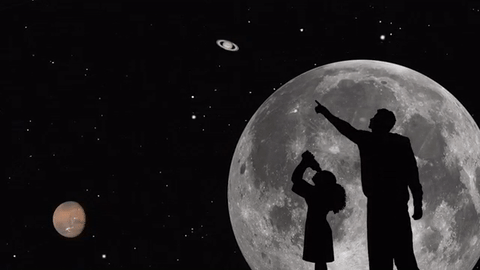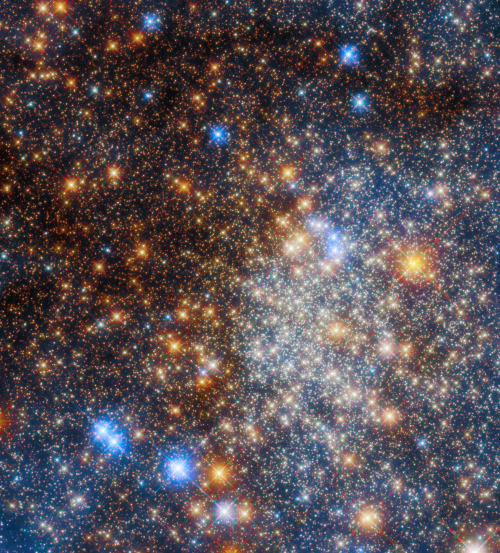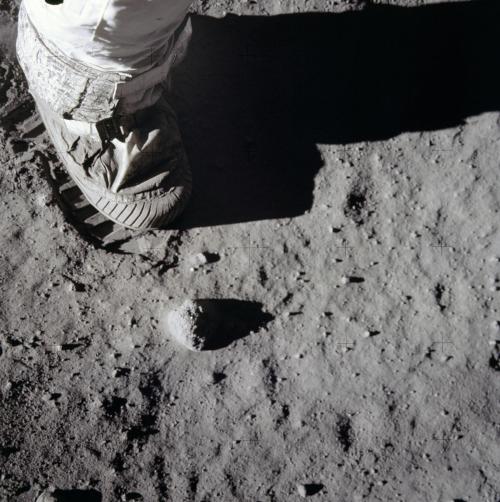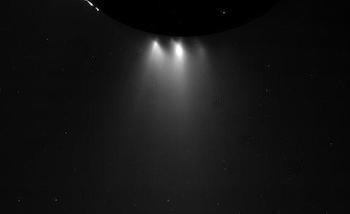Land Is Sliding, Tell Us Where!
Land is Sliding, Tell Us Where!
Summer in the northern hemisphere brings monsoon season, causing heavy rains and flooding that trigger landslides. Next time you see a landslide in the news, online, or in your neighborhood, submit it to our citizen science project Landslide Reporter to build the largest open global landslide catalog and help us and the public learn more about when and where they occur.
Rainfall is the most common cause of landslides.
After a storm, the soil and rock on a slope can become saturated with water and begin to slide downwards, posing a danger to people and destroying roads, houses and access to electricity and water supplies.

We have been monitoring rainfall from space for decades.
Orbiting the Earth right now, the Global Precipitation Measurement (GPM) mission is a group of 10 satellites that measure rain, snow, sleet and other precipitation worldwide every three hours. This data tells us where and when heavy rain is falling and if it could lead to disasters.

What can rainfall data tell us about landslides?
We're using GPM data to understand where and when landslides are happening. A global landslide model uses information about the environment and rainfall to anticipate where landslides are likely to happen anytime around the world every three hours.

To improve the global landslide model and other landslide research, NASA is looking for citizen scientists like you!
If you find a landslide reported online or in your neighborhood, you can provide the event details in Landslide Reporter, our citizen science project.

Your detailed reports are added into an open global landslide inventory available at Landslide Viewer. We use citizen science contributions along with other landslide data to check our prediction model so we can have a better picture of how rainfall, slope steepness, forest cover, and geology can trigger a landslide.

Because the data is open, anyone can use the data for research or response.
When you report a landslide, you improve our collection of landslide data for everyone.
Help support landslide efforts worldwide by contributing to Landslide Reporter, and you can help inform decisions that could save lives and property today! Learn more about the project at https://landslides.nasa.gov. You can also follow the project on Twitter and Facebook.
Make sure to follow us on Tumblr for your regular dose of space: http://nasa.tumblr.com.
More Posts from Nasa and Others
Hey, Kate! What would you say/what advice would you give to your younger self? ✨
What was your favorite thing about working in Mission Control? (Also, you are the best
What’s Up for February?
What's Up for February? Look to the night sky for a brighter Venus, Comet 45P, asteroid Vesta and more.

Tonight, you can see Venus along with a crescent moon, Mars and Uranus just after sunset. No binoculars needed!

While there are no meteor showers this month, behold the zodiacal light!

This phenomenon is caused when sunlight reflects off dust particles in the plane of our solar system. Use Venus and Mars as a cone-shaped guide on the western horizon in late February and March.

Comet 45P will be visible using binoculars and telescope and will make its closest approach to Earth on February 11.

Finally, bright asteroid Vesta can be found in the constellation Pisces.
Follow us on Tumblr for your regular dose of space: http://nasa.tumblr.com

Pumpkin space latte, anyone? ☕
Hubble captured this festive array of stars, Terzan 12, found in the Milky Way about 15,000 light-years from Earth. The stars in this cluster are bound together by gravity in a sphere-like shape and are shrouded in gas and dust. As the starlight travels through that gas and dust to Earth, blue light scatters, leaving the redder wavelengths to come through.
Download the full-resolution image here.
Make sure to follow us on Tumblr for your regular dose of space!
State of NASA
Over his tenure, President Obama has now invested $147 billion in America’s space program. Our elected leaders, on a bipartisan basis, have chosen to make this investment in our Agency, because they believe in our Journey to Mars and recognize that investments in NASA’s present are investments in America’s future.
Because the State of our NASA is strong, President Obama is recommending a $19 billion budget for the next year to carry out our ambitious exploration and scientific discovery plans. Here are the areas in which we’ll continue to invest:
Solar System and Beyond

As we explore our solar system and search for new worlds, we look to answer key questions about our home planet, neighboring planets in our solar system and the universe beyond.
Journey to Mars

We’re developing the capabilities needed to send humans to an asteroid by 2025 and Mars in the 2030s. Mars is a rich destination for scientific discovery and robotic and human exploration as we expand our presence into the solar system. Its formation and evolution are comparable to Earth, helping us learn more about our own planet’s history and future.
International Space Station

Earth Right Now

We use the vantage point of space to increase our understanding of our home planet, improve lives and safeguard our future. Our Earth science work also makes a difference in people’s lives around the world every day.
Technology Drives Exploration

Sustained investments in our technology advance space exploration, science and aeronautics capabilities. We seek to improve our ability to access and travel through space; land more mass in more locations throughout our solar system; live and work in deep space and on planetary bodies; build next generation air vehicles, and transform the ability to observe the universe and answer profound questions in Earth and space sciences.
Aeronautics

Thanks to advancements in aeronautics developed by NASA, today’s aviation industry is better equipped than ever to safely and efficiently transport all those passengers to their destinations.

The President’s FY 2017 budget provides $790 million to our Aeronautics Research Mission Directorate. This investment will accelerate aviation energy efficiency, advance propulsion system transformation and enable major improvements in aviation safety and mobility. The future of flight will: utilize greener energy, be half as loud, use half the fuel and will create quieter sonic booms.
State of NASA Social

Today, we have opened our doors and invited social media followers and news media to an in-person event, at one of our 10 field centers. Guests will go on a tour and see highlights of the work we’re doing. You can follow along digitally on Twitter: https://twitter.com/NASASocial/lists/state-of-nasa-all1.
Check our Twitter Moment HERE.
Did you miss NASA Administrator Bolden’s remarks? You can watch a full recap HERE.
For all budget related items, visit: http://www.nasa.gov/news/budget/index.html
Make sure to follow us on Tumblr for your regular dose of space: http://nasa.tumblr.com

Go green — in space!
Good things come in mini-fridge-sized packages. This small spacecraft is our Green Propellant Infusion Mission and will test a low toxicity propellant. This technology could lengthen mission durations by using less propellant.
Make sure to follow us on Tumblr for your regular dose of space: http://nasa.tumblr.com.

July 20, 1969: People around the world tune their radios and television sets to watch humans step foot on the Moon for the first time.
Gather ‘round with us today and experience history as it unfolded 50 years ago.
Watch NASA TV at 4:02 p.m. EDT as we replay the original live broadcast of the Apollo 11 Moon landing.
Then, at 10:38 p.m. EDT, watch the replay of the original live broadcast of the first steps on the Moon, as the world watched it in 1969:
Make sure to follow us on Tumblr for your regular dose of space: http://nasa.tumblr.com.
Solar System: 5 Things to Know This Week
Our solar system is huge, so let us break it down for you. Here are 5 things to know this week:
1. Letting the Air Out

The atmosphere on Mars is whisper-thin and drier than bone--but it wasn't always that way. For the past year, the MAVEN mission has been orbiting the planet, piecing together clues about what happened to all the air on Mars. At 2 p.m. EST on Nov. 5, we will hold a briefing on some new findings about the Martian atmosphere. Make sure to tune in on NASA Television.
2. How Much Juno about Jupiter?

We're all going to know a lot more about the king of planets soon, thanks to the Juno mission. Juno's project scientist will be giving a live lecture on Nov. 5 and 6 to explain what discoveries might await and how the spacecraft is expected to survive Jupiter's dangerous radiation environment for over a year, long enough to make over 30 close polar passes. Watch the live lecture HERE.
3. Excitement at Enceladus

Our Cassini spacecraft has returned stunning images from its ultra-close flyby of Saturn's active moon Enceladus on Oct. 28. The photos are providing a quick look at Enceladus and its plume of icy vapor from the moon's geysers. But some of the most exciting science is yet to come, as scientists will be poring over data from Cassini's instruments to see what they detected as they flew through the plume.
4. A New Dimension in Lunar Landscapes

The Lunar Reconnaissance Orbiter maps the moon in boulder-by-boulder detail daily. The team that operates the spacecraft's most powerful camera has been releasing 3D versions of its high-resolution looks at the surface. You can see depth and detail in the pictures if you can get or make some red-blue glasses.
5. Pluto in Perspective

The New Horizons spacecraft has fired its engines again as it carries out a series of four maneuvers propelling it toward an encounter with the ancient Kuiper Belt object 2014 MU69, a billion miles farther from the sun than Pluto. Meanwhile, it continues the ongoing download of data from the Pluto encounter, including this recent stunner.
Make sure to follow us on Tumblr for your regular dose of space: http://nasa.tumblr.com
Did you have an innate talent for math? Or did you struggle and practiced until you understood it? I wanted to become an aerospace engineer but after taking a class I decided psychology was more suited for me because I struggled with equations but thrived with the psychological terms
Anything you don’t know is hard until you learn it. There are a few geniuses in the world, but most people study and work hard to learn what they love. Even the smartest amongst you actually put in a lot of time to learn the things that they want, and no one is an exception. You have to put in the time.
Our Space Launch System Rocket’s “Green Run” Engine Testing By the Numbers
We continue to make progress toward the first launch of our Space Launch System (SLS) rocket for the Artemis I mission around the Moon. Engineers at NASA’s Stennis Space Center near Bay St. Louis, Mississippi are preparing for the last two tests of the eight-part SLS core stage Green Run test series.
The test campaign is one of the final milestones before our SLS rocket launches America’s Orion spacecraft to the Moon with the Artemis program. The SLS Green Run test campaign is a series of eight different tests designed to bring the entire rocket stage to life for the first time.
As our engineers and technicians prepare for the wet dress rehearsal and the SLS Green Run hot fire, here are some numbers to keep in mind:

212 Feet
The SLS rocket’s core stage is the largest rocket stage we have ever produced. From top to bottom of its four RS-25 engines, the rocket stage measures 212 feet.

35 Stories
For each of the Green Run tests, the SLS core stage is installed in the historic B-2 Test Stand at Stennis. The test stand was updated to accommodate the SLS rocket stage and is 35 stories tall – or almost 350 feet!

4 RS-25 Engines
All four RS-25 engines will operate simultaneously during the final Green Run Hot Fire. Fueled by the two propellant tanks, the cluster of engines will gimbal, or pivot, and fire for up to eight minutes just as if it were an actual Artemis launch to the Moon.

18 Miles
Our brawny SLS core stage is outfitted with three flight computers and special avionics systems that act as the “brains” of the rocket. It has 18 miles of cabling and more than 500 sensors and systems to help feed fuel and direct the four RS-25 engines.

733,000 Gallons
The stage has two huge propellant tanks that collectively hold 733,000 gallons of super-cooled liquid hydrogen and liquid oxygen. The stage weighs more than 2.3 million pounds when its fully fueled.

114 Tanker Trucks
It’ll take 114 trucks – 54 trucks carrying liquid hydrogen and 60 trucks carrying liquid oxygen – to provide fuel to the SLS core stage.

6 Propellant Barges
A series of barges will deliver the propellant from the trucks to the rocket stage installed in the test stand. Altogether, six propellant barges will send fuel through a special feed system and lines. The propellant initially will be used to chill the feed system and lines to the correct cryogenic temperature. The propellant then will flow from the barges to the B-2 Test Stand and on into the stage’s tanks.

100 Terabytes
All eight of the Green Run tests and check outs will produce more than 100 terabytes of collected data that engineers will use to certify the core stage design and help verify the stage is ready for launch.
For comparison, just one terabyte is the equivalent to 500 hours of movies, 200,000 five-minute songs, or 310,000 pictures!

32,500 holes
The B-2 Test Stand has a flame deflector that will direct the fire produced from the rocket’s engines away from the stage. Nearly 33,000 tiny, handmade holes dot the flame deflector. Why? All those minuscule holes play a huge role by directing constant streams of pressurized water to cool the hot engine exhaust.

One Epic First
When NASA conducts the SLS Green Run Hot Fire test at Stennis, it’ll be the first time that the SLS core stage operates just as it would on the launch pad. This test is just a preview of what’s to come for Artemis I!
The Space Launch System is the only rocket that can send NASA astronauts aboard NASA’s Orion spacecraft and supplies to the Moon in a single mission. The SLS core stage is a key part of the rocket that will send the first woman and the next man to the Moon through NASA’s Artemis program.

Make sure to follow us on Tumblr for your regular dose of space: http://nasa.tumblr.com
-
 lighting-69 liked this · 5 years ago
lighting-69 liked this · 5 years ago -
 beq5 liked this · 5 years ago
beq5 liked this · 5 years ago -
 boygps liked this · 6 years ago
boygps liked this · 6 years ago -
 sorelylackingsnifters reblogged this · 6 years ago
sorelylackingsnifters reblogged this · 6 years ago -
 just-ambling-along reblogged this · 6 years ago
just-ambling-along reblogged this · 6 years ago -
 prtty-littr-psyco liked this · 6 years ago
prtty-littr-psyco liked this · 6 years ago -
 wiredcyberia liked this · 6 years ago
wiredcyberia liked this · 6 years ago -
 sirens-called liked this · 6 years ago
sirens-called liked this · 6 years ago -
 enby-in-fandom reblogged this · 6 years ago
enby-in-fandom reblogged this · 6 years ago -
 enby-in-fandom liked this · 6 years ago
enby-in-fandom liked this · 6 years ago -
 thishazeleyeddemon reblogged this · 6 years ago
thishazeleyeddemon reblogged this · 6 years ago -
 demonfuck reblogged this · 6 years ago
demonfuck reblogged this · 6 years ago -
 eroticcannibal reblogged this · 6 years ago
eroticcannibal reblogged this · 6 years ago -
 transfaabulous reblogged this · 6 years ago
transfaabulous reblogged this · 6 years ago -
 urbanoceanix reblogged this · 6 years ago
urbanoceanix reblogged this · 6 years ago -
 udnoestaaqui reblogged this · 6 years ago
udnoestaaqui reblogged this · 6 years ago -
 titania-saturnine reblogged this · 6 years ago
titania-saturnine reblogged this · 6 years ago -
 kawuli reblogged this · 6 years ago
kawuli reblogged this · 6 years ago -
 gredunyte reblogged this · 6 years ago
gredunyte reblogged this · 6 years ago -
 alienriver888 liked this · 6 years ago
alienriver888 liked this · 6 years ago -
 oleg-alexandrovich liked this · 6 years ago
oleg-alexandrovich liked this · 6 years ago -
 coolmakeupgoals-blog liked this · 6 years ago
coolmakeupgoals-blog liked this · 6 years ago -
 msfizicks reblogged this · 6 years ago
msfizicks reblogged this · 6 years ago -
 pepdart liked this · 6 years ago
pepdart liked this · 6 years ago -
 environmentalgoblin reblogged this · 6 years ago
environmentalgoblin reblogged this · 6 years ago -
 fleurdebach5-blog liked this · 6 years ago
fleurdebach5-blog liked this · 6 years ago -
 sorthyboy reblogged this · 6 years ago
sorthyboy reblogged this · 6 years ago -
 tomcat-303 reblogged this · 6 years ago
tomcat-303 reblogged this · 6 years ago -
 tomcat-303 liked this · 6 years ago
tomcat-303 liked this · 6 years ago -
 omlette87 reblogged this · 6 years ago
omlette87 reblogged this · 6 years ago -
 themightyglowworm reblogged this · 6 years ago
themightyglowworm reblogged this · 6 years ago -
 themightyglowworm liked this · 6 years ago
themightyglowworm liked this · 6 years ago -
 jul-likes-magpies reblogged this · 6 years ago
jul-likes-magpies reblogged this · 6 years ago -
 gentianablue reblogged this · 6 years ago
gentianablue reblogged this · 6 years ago -
 americanbrightside reblogged this · 6 years ago
americanbrightside reblogged this · 6 years ago -
 myothertardisisonthemun reblogged this · 6 years ago
myothertardisisonthemun reblogged this · 6 years ago -
 mizube-japan liked this · 6 years ago
mizube-japan liked this · 6 years ago -
 1cat-2cat-3cat liked this · 6 years ago
1cat-2cat-3cat liked this · 6 years ago -
 salahare reblogged this · 6 years ago
salahare reblogged this · 6 years ago
Explore the universe and discover our home planet with the official NASA Tumblr account
1K posts